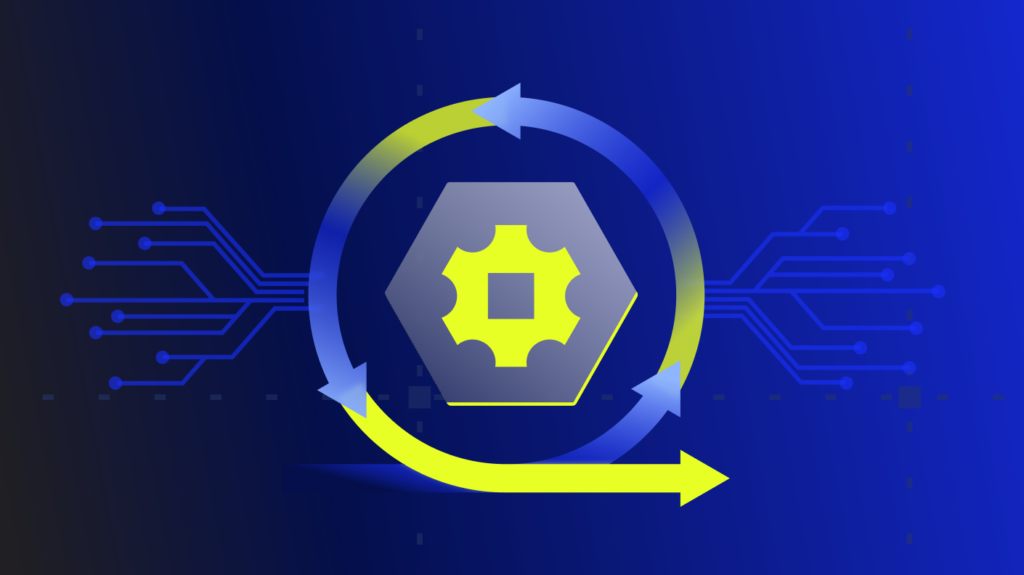Organizations of all sizes have a complex array of hardware, software, staff, and vendors. Each of those assets comes with complex configurations and relationships between them. Visualizing and tracking these configurations and relationships over time is critical to quickly responding to incidents. Plus, it helps inform business decisions, especially regarding future IT components and upgrades.
Any organization familiar with the ITIL framework will know the term configuration management database (CMDB). This unique database aims to track a company’s assets and all of the complex relationships between them. However, designing a configuration management database is not that easy. You must consider what to include, how to find it, the intricacies of maintaining it, and everything in between.
Are you interested in implementing a configuration management database in your IT department, or need help improving a CMDB project gone wrong? If so, this guide will help you find a feasible solution to maintain and make it accessible to everyone who needs it.
Key takeaways




What is a CMDB?
A configuration management database (CMDB) is unlike other databases because it’s designed entirely for internal management and control purposes. A CMDB acts as a central repository. It’s used to track and control the relationships between various IT assets and their established configurations. For any company implementing the Information Technology Infrastructure Library (ITIL) framework, a CMDB is crucial to IT processes.
The ITIL framework lays out many crucial IT standards and processes. These pertain to incident response, availability, deployment management, and other key activities. The framework makes suggestions to help better align these IT activities with business objectives. Doing so recognizes that the most up-to-date and accurate information must inform these processes and the resulting decisions. So, to execute the framework, IT departments require good configuration management. That means enlisting the help of a CMDB.
Configuration management aims to give a team the context it needs to evaluate an asset. Instead of viewing it in a silo, the IT department can look at the CMDB to see how it relates to other assets. They can then see how changing its configuration will impact the organization. This information allows IT managers and administrators to make better-informed decisions. Thus, a CMDB helps plan releases, deploy new components, and respond to incidents.
For example, if something disrupts the business’s network and impacts all workstations in a given department, an IT administrator would have difficulty manually tracking down the routers and servers involved in the issue. This would lead to a great deal of trial and error or information hunting just to start step one of resolving the issue. On the other hand, if that administrator has a CMDB to reference, they can immediately figure out the routers, servers, and other infrastructure involved.
Even with a basic example such as this, it’s clear to see that a CMDB is incredibly valuable for IT professionals. CMDBs will take time to set up and maintain. However, their ability to speed up incident resolution, simplify deployments, and better inform IT decisions means the investment will pay off rapidly.
Why is a CMDB important?
The role of a CMDB in the IT department is clear. With all of the information in front of them, an IT professional can better make decisions pertaining to incident resolution, system updates, and infrastructure upgrades. The result is more efficient resource utilization and less trial-and-error. In turn, that helps the entire organization continue running smoothly.
A CMDB centralizes asset visibility, helping IT teams make faster, data-driven decisions and reduce downtime.
In addition to giving IT insight into how an organization’s data assets are being controlled and connected, a CMDB also reveals data that are siloed in various departments. This information helps organizations restore accessibility and visibility at scale. A CMDB improves data governance. In turn, that helps support the mission-critical activities of the company’s planners, accountants, and operations staff.
- The IT department is empowered to resolve issues more quickly by understanding the connections between affected systems at a glance. Likewise, they have the information they need to inform decisions. Integrations, upgrades, and deployments happen more smoothly. Visibility minimizes issues and downtime.
- The planning department needs the CMDB in order to plan high-level enterprise architecture. Technology managers also need the insights a CMDB provides to manage assets and capacity at a more granular level.
- The accounting department requires a more detailed overview of various assets and their associated costs. This supports accurate billing and budgeting.
- The operations department relies on the CMDB to inform about changes and incident management. The CMDB helps identify root causes, changes, risks, and other key indicators. The Ops team needs this information to prevent issues and keep processes running smoothly.
As you can see, the CMDB’s role has a far-reaching impact that ultimately touches every facet of an organization. A lack of visibility will directly impact operations, compliance, and reporting. That’s why implementing CMDB helps businesses overcome inefficiencies.
How do CMDBs work?
CMDBs work by gathering data from different sources and storing information about IT assets and other configuration items in a commonplace that is easily accessible. Even for a small company, CMDBs are necessary. Once an IT department begins analyzing all of its assets and the complicated relationships between them, it will discover a substantial amount of information that must be stored. Plus, that information needs to be updated often.
Using a CMDB is regarded as the most efficient way to store IT information. After all, it can track complicated configurations, relationships, and dependencies with ease. When designing a CMDB, you should plan to enter all known assets. These assets are referred to as “configuration items” (CIs). Once all assets are entered, it is then the responsibility of the IT department to connect the dots. That means defining the various relationships between the CIs.
There are several assets that a department may need to track. Some examples include hardware, software, documentation, and vendors. Both manual and automated tools exist to help IT departments discover their assets and the relationships between them. While it’s not possible to achieve and maintain complete accuracy, departments should strive to keep the CMDB as up-to-date as possible. If it’s not updated, the CMDB won’t be able to serve its purpose effectively.
Regarding who should be in charge of creating the CMDB, it’s a group effort. Once the CIs have been identified, their respective owners should be brought into the process as early as possible. These individuals will hold helpful knowledge about the asset and its complex relationships. The involvement of these stakeholders helps to make sure that the CMDB is accurate and complete.
Once data has been brought into the CMDB, the challenge becomes maintaining it. Certain characteristics set a good, usable CMDB apart from those ultimately not maintained. Failing to prioritize these characteristics could mean the CMDB is eventually abandoned due to inefficiencies and resource consumption.
Real-time monitoring and incident management with a CMDB
A CMDB plays a pivotal role in real-time monitoring by providing IT teams with a centralized view of all CIs and their relationships. When integrated with monitoring and automation tools, a CMDB can continuously track the health of critical IT assets, proactively alerting teams to potential issues and reducing the time to resolution.
For instance, suppose a network disruption impacts multiple assets. A CMDB enables IT administrators to quickly identify the affected routers, servers, and applications by viewing dependency mappings. This view accelerates root cause analysis, allowing teams to isolate the issue and focus on specific CIs instead of manually troubleshooting a broad network.
Additionally, CMDBs integrated with AIOps can automatically trigger responses for certain incidents. This functionality allows IT teams to automate routine responses, freeing up resources to focus on high-priority tasks. With automated workflows, the CMDB can also log incident data, providing an audit trail that supports compliance and continuous improvement.
Incorporating real-time monitoring through a CMDB thus enhances an IT department’s ability to manage incidents effectively and maintain system stability, ultimately minimizing downtime and improving service reliability.
Characteristics of a CMDB
Now, you have a big-picture understanding of how a CMDB works and the role it plays in IT and the ITIL framework. However, it’s also important to approach it in a more practical sense. A CMDB may store hundreds, if not thousands, of CIs. How are these discovered, maintained, and utilized on a day-to-day basis? That depends on the exact features and characteristics of the CMDB you’re designing.
The first characteristics that need to be identified relate to the creation and maintenance of the database itself. Departments will need to pull in data manually and with API-driven integrations. There should also be automation involved. Without automated discovery, accurately creating and maintaining the CMDB will prove challenging. So, incorporating scanning tools into the CMDB should be a top priority.
During the creation and throughout its use, the department needs to maintain a graphical representation of all the CIs in the database. You should be able to see how CIs are dependent on each other at a glance. This is known as service mapping. Some CMDB tools can generate a service map automatically.
By providing a clear, visual representation of these dependencies, service mapping helps IT teams quickly understand the relationships between configuration items (CIs). This level of visibility is critical when planning changes, as it allows teams to assess the potential impact on interconnected systems before implementation. For example, if a critical server is scheduled for an update, service mapping instantly shows which applications and services depend on that server. This insight minimizes the risk of unforeseen IT outages, allowing for smoother change management.
Once established, a CMDB should be intuitive, accessible, and visual whenever possible. This starts by implementing dashboards that track specific metrics about the CIs and their relationships. For instance, IT departments should be able to pinpoint how a change or release impacts the health of relevant CIs. The dashboard should also reveal patterns in incident reports, outstanding issues, and associated costs.
The IT department should also have visibility into compliance, especially when working at the enterprise level. Auditors need to know the state of CIs and have access to historical incidents and changes. For that reason, transparency and reporting are critical characteristics of a CMDB.
Enabling users to gain access to the database is critical, limiting what they can view and change. For that reason, access controls are another essential characteristic. A lack of access controls will lead to significant data integrity and compliance challenges.
Implementing a CMDB presents several additional challenges, including cultural differences, relevance, centralization, accuracy, processes, and tool-related issues. These obstacles can complicate the implementation process and impede the realization of its full benefits.
As you can see, the design of a CMDB can grow very complicated very fast. This is why the IT department must gather key stakeholders. Teams must discuss the organization’s compliance needs and other considerations before they implement a CMDB. With a well-informed team in place, a business is empowered to design underlying infrastructure that’s feasible to maintain and use daily.
Once established, a CMDB should be intuitive, accessible, and visual whenever possible. Dashboards tracking metrics about CIs and their relationships can enhance team-wide understanding of the IT infrastructure. These visual aids not only help pinpoint the impact of changes but also improve cross-departmental communication by presenting complex dependencies in a user-friendly way.
Should you implement CMDB monitoring?
Implementing a CMDB helps organizations manage their assets and regain visibility into their data and infrastructure. Any organization following the ITIL framework needs a CMDB. However, smaller companies may feel that they will not be able to realize great value from one.
In truth, companies of all sizes—including small businesses—are finding that a CMDB is becoming more important. No matter the size of your operations, you are not exempt from complying with data privacy and protection regulations. As data governance standards grow more strict, visibility is crucial.
In addition, a CMDB helps companies improve the observability of their systems. Even smaller companies struggle as data and assets become more distributed across the cloud, on-premises, and third-party applications. With all that in mind, a CMDB is likely a worthy investment for your business.
The good news is that you do not have to build your CMDB from scratch. Several solution providers can help your company establish a CMDB. They even have the associated dashboards, tracking, and access controls. The result is a CMDB that’s easier to implement, use, and maintain. Achieving that reality takes the right partners.
A well-maintained CMDB becomes an operational backbone, empowering IT to align with business goals.
CMDB implementation and maintenance tips
Implementing a CMDB may seem daunting, but starting with a focused approach can set the foundation for long-term success. Begin with the critical assets and CIs that have the most impact on daily operations. By establishing the core components first, your team can gradually expand the CMDB’s scope over time as more data and resources become available.
Involve key stakeholders early in the process to ensure accuracy and completeness. Each department typically has unique insights into its assets, making their involvement essential for identifying dependencies and asset relationships accurately. These stakeholders not only provide valuable information during the setup but also contribute to ongoing maintenance.
Automation is a cornerstone of effective CMDB management, particularly as IT environments grow in complexity. Automated discovery tools help keep asset information up-to-date, reducing the risk of outdated or incomplete data. When combined with regular review schedules, automation ensures that the CMDB remains a reliable source of truth for configuration and asset management.
IT Asset Management (ITAM) also plays a crucial role in managing IT infrastructure. While CMDB focuses on the technical details and relationships between assets, ITAM focuses on ensuring all assets are accounted for and managed efficiently throughout their lifecycle. This includes procurement, deployment, maintenance, and retirement of assets.
Finally, schedule periodic audits of the CMDB to maintain data accuracy and relevance. Regular reviews help identify and address discrepancies, ensuring the database remains useful for incident response, change management, and compliance.
Ready to take your CMDB to the next level?
A well-maintained CMDB goes beyond simple configuration tracking—it becomes an operational backbone that empowers IT departments to align with business objectives, enhance compliance, and improve infrastructure planning. By centralizing and visualizing the relationships between critical assets, a CMDB enables IT teams to make informed, strategic decisions that support both immediate and long-term business goals.
Whether you’re a small business looking to establish a CMDB or a large organization ready to optimize an existing setup, now is the time to assess your needs and start planning for growth. Implementing and maintaining a CMDB is an investment in your organization’s future—ensuring visibility, accountability, and agility as IT environments continue to evolve.
The LogicMonitor ServiceNow CMDB Integration eliminates the need for time-consuming data sifting across systems, so you can gain a holistic view of your ecosystem, from infrastructure to applications. With immediate notifications for changes, you can stay on top of your assets and their dependencies without missing a beat.
Subscribe to our blog
Get articles like this delivered straight to your inbox







